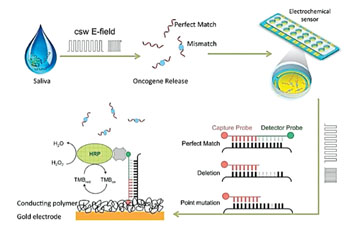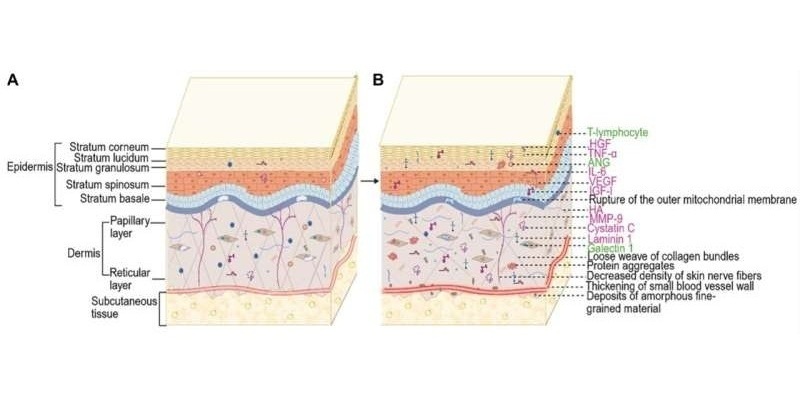Novel Saliva Test Identifies and Tracks Cancer
By LabMedica International staff writers
Posted on 02 Mar 2016
A rapid, accurate test that can detect biomarkers of lung cancer in saliva is soon to be trialed in patients and the test takes only 10 minutes to give a result and could be done in the doctor's office.Posted on 02 Mar 2016
A method called "liquid biopsy" that detects circulating tumor DNA in bodily fluids such as saliva and blood and the liquid biopsy holds the promise of rapid, less invasive identification of cancers and easier tracking of disease progress during treatment.

Image: Schematics of EFIRM technology for the detection of EGFR mutations in the bodily fluids of lung cancer patients. The cyclic-square wave of the electrical field (csw E-field) was applied to release and detect the EGFR mutations. EGFR sequences were measured on the electrochemical sensor with a capture probe precoated in conducting polymer (Photo courtesy of University of California-Los Angeles).
Scientists at the University of California-Los Angeles (UCLA; CA, USA) developed the device that uses electric field-induced release and measurement (EFIRM) to detect non-small-cell lung cancer (NSCLC) biomarkers in saliva. The EFIRM device analyzes the contents of exosomes which are tiny bags of molecules that cells release now and again. The device forces the exosomes to release their contents and carries out bio-recognition of the released biomolecules at the same time, and the method is high accurate compared with current sequencing technology.
The test works by detecting genetic mutations in a protein called epidermal growth factor receptor (EGFR). The protein normally helps cells grow and divide, but some NSCLC cells have too much EGFR, which makes them grow faster. Drugs called EGFR inhibitors that block the protein could be ordered promptly by a clinician. The key finding came from a blind and randomized clinical study that used saliva samples procured from lung cancer patients. Using the EFIRM method to detect two key tumor-causing mutations in the EGFR gene (L858R and exon 19 deletion) in saliva, the investigators achieved nearly identical results as with bronchoscopy-based detection of the same two mutations.
Their findings have significant implications in the quest to develop more effective, noninvasive, reliable early detection testing for lung cancer mutations. Furthermore, EFIRM testing has the potential to show how the body is reacting to cancer therapeutics and whether those therapeutics need to be adjusted to improve a patient’s response.
David T.W. Wong, DMD, DMSc, Director for UCLA Center for Oral/Head & Neck Oncology Research, who led the study, sees the test forming part of a set of diagnostic tools. For example, should a lung X-ray show a suspicious nodule, and then the doctor could use the saliva test to rapidly find out if cancer is likely. The study was presented at the 2016 Annual Meeting of the American Association for the Advancement of Science that was held February 11–15, 2016, in Washington DC (USA).
Related Links:
University of California-Los Angeles













